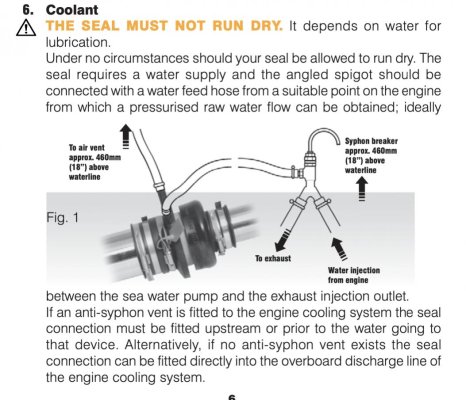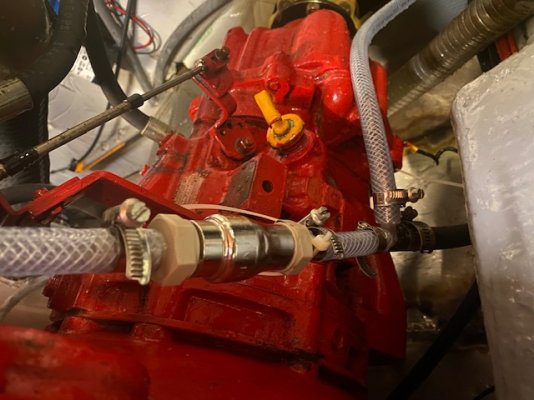I asked the supplier of my Manecraft stern shaft seal if I would damage the seal if I run my twin engine 40 ft Ocean Marine trawler on one engine, which I do on open waters to save fuel and to let my Lehmans run in a higher rev bracket. The answer was that the seal should never run dry, which is indeed in the manual. I was just wondering to what extend that is really an issue and wether the water present in the seal is enough to lubricate the seal.
Also, if the seal needs constant water pressure would it be OK to connect the port water supply hose to the starboard water supply hose as such that when one engine runs, both seals are supplied with cooling water. I was wondering if there could be adverse affects on the idled engine. I can't imagine what the adverse effect would be.
I looked at the manual of my gear and idling without cooling was allowed.
I am puzzled by the argument about the drag caused by locked or free running propellors. I found both the helicopter argument as the graph convincing, the latter more in line with what I would expect. My mechanical engineering brain locks up over this argument. Thanks for the original question, even if some answers, like mine, seem to be more troublesome than the question itself.


